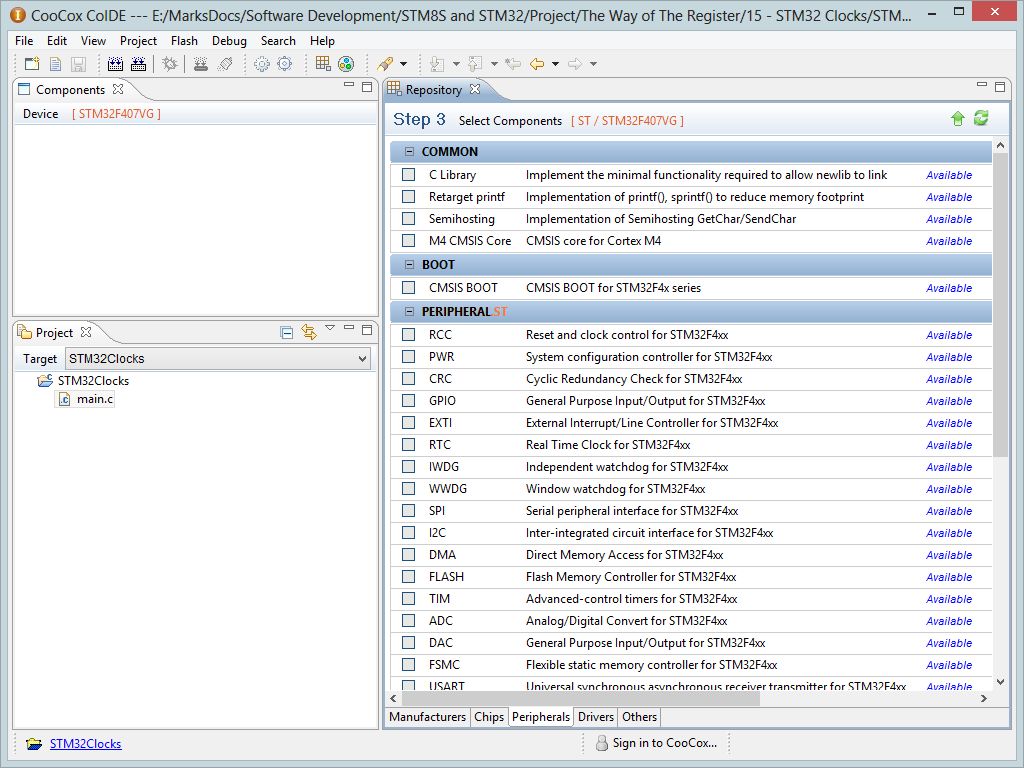Stm32f4 Clock Configuration Tool

• • Find product guides, documentation, training, onboarding information, and support articles. • • • Submit a ticket for technical and product assistance, or get customer service help.
• • • • • Learn through self-study, instructor-led, and on-demand classes with the SolarWinds Academy. • • • Download the latest product versions and hotfixes. Manage your portal account and all your products. Jonathan Fire Eater Rar. • • Renew to download the latest product features, get 24/7 tech support, and access to instructor-led training.
I'm using STM32f103 micro controller for a while and today I just confused about clock source and PLL configuration! STM32 clock adjustment.
It’s a lot of fun writing code on your Discovery board with its myriad of peripherals to explore and exposed headers for further experimentation. Nothing, however, beats the satisfaction to be had from creating and coding your own board and there comes a time when every red blooded geek must strike out on their own! I’ve recently been presented with an opportunity to create a new board that required a lot more grunt than the PIC based boards I normally deal with. We needed a much faster processor, an FPU and some DSP capability.
AN3988 Application note Clock configuration tool for. This application note presents the clock system configuration tool. To use the clock tool with. Nov 16, 2013 STM32 Technical Video Series: This video details how to use the STM32F2 Clock Configuration Tool. STSW-STM32091 - Clock configuration tool for STM32F40x/41x microcontrollers (AN3988), STSW-STM32091, STMicroelectronics.
As a result I opted to use the STM32F405RG as the MCU. The next thing I wanted to do was to mash up a prototype but I needed a quick and easy way to program it. I remembered that the Discovery board has an ST-LINK section with an SWD interface broken out onto headers so I thought I’d give it a go. Setting up your Discovery to use it as a programmer is a very straightforward affair.
Driver Lexmark Z32 Windows Vista here. The ST-LINK section is the top third of the board and can be easily isolated by removing the two CN3 jumpers shown above. You’re also clearly going to need to expose the SWD interface on your board so you have something to connect the ST-LINK to. The schematic below shows how I did it. A couple of things to note about the circuit above. I’ve pulled BOOT0 low which means that I’m programming flash memory. If you want to program other areas of memory then you’ll want to be able to change the state of this and the BOOT1 pin which is multiplexed with PB2 on the STM32F40x parts. Details can be found in section 2.4 of the.
The other thing I did was to expose the additional JTAG interface pins also in order to give me several programming and debugging options. Finally, I connected the NRST pin on the ST-LINK to the NJRST pin on my STM32. That may be wrong, you might be better off connecting it to the NRST pin on the STM32. Perhaps someone out there can let me know in the comments below. The SWD interface is connected as follows: I chose to expose the interface as a row of 0.1” pitch header and connected the two boards together with female to female patch leads. The next step is to try and get some code running on the device.
I’m using Atollic TrueSTUDIO Lite for this but I’m sure the process is pretty much the same for other IDEs too. Project Creation Steps To get up a program up and running on the new board you need to create a new project that targets the STM32F405 or whichever STM32 part you’re using. This will generate a new, compilable and runnable project.
If you run the program up now in the debugger you should be able to step through the code, look at variable values and memory content. This shows that everything is working fine. The final step is to sort out your clocks. TrueSTUDIO will create a default system_stm32f4xx.c file containing a clock configuration for you but unless you happen to be using a 25MHz crystal you’ll want to change it for one targeting your own board. Mine, for example, uses a 4MHz external clock. STM32 Clock Configuration Tool The easiest way to do this (as far as I’m aware at least) is to use the clock configuration tool provided by STMicroelectronics for the purpose. You can download the tool and the accompanying notes from.